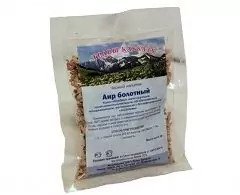Budoster
Instructions for use:
- 1. Release form and composition
- 2. Indications for use
- 3. Contraindications
- 4. Method of application and dosage
- 5. Side effects
- 6. Special instructions
- 7. Drug interactions
- 8. Analogs
- 9. Terms and conditions of storage
- 10. Terms of dispensing from pharmacies
Prices in online pharmacies:
from 645 rub.
Buy

Budoster is a glucocorticosteroid (GCS) agent for topical use.
Release form and composition
Dosage form - dosed nasal spray: a homogeneous suspension of white or almost white color (200 doses in dark glass vials equipped with a dosing valve, in a cardboard box 1 bottle).
Active substance: budesonide, in 1 dose - 50 mcg.
Auxiliary components: avicel (microcrystalline cellulose and sodium carmellose in a ratio of 9: 1), hydrochloric acid, disodium edetate, polysorbate 80, potassium sorbate, dextrose, purified water.
Indications for use
- vasomotor rhinitis;
- seasonal and year-round allergic rhinitis (treatment and prevention);
- polyps of the nose.
Contraindications
Absolute:
- pulmonary tuberculosis in active form;
- viral, bacterial and fungal infections of the respiratory tract;
- children under 6 years old;
- lactation period;
- hypersensitivity to any component of the drug.
Relative:
- tuberculosis;
- recent injuries to the nose;
- recent nasal surgery;
- pregnancy.
Method of administration and dosage
Budoster is administered intranasally.
For adults and children from 6 years old: the initial dose is 100 mcg in each nostril 2 times a day, the maintenance dose is 100 mcg in each nasal passage 1 time a day (in the morning) or 50 mcg 2 times a day (in the morning and in the evening). The maintenance dose is determined on an individual basis, but it should be the minimum effective dose to eliminate the symptoms of rhinitis.
Maximum allowable doses: single - 200 mcg (100 mcg in each nasal passage), daily - 400 mcg.
The effect of using a nasal spray develops in 5-7 days. The duration of treatment should not exceed 3 months.
If you miss the next dose, you should take the dose as soon as possible, but not less than 1 hour before the next dose.
Children should administer the drug under adult guidance.
Side effects
- local reactions: possibly - the formation of crusts on the nasal mucosa, burning sensation; at the beginning of treatment - rhinorrhea, excoriation (these reactions are usually short-term); often (> 1/100 - 1/1000 - <1/100) - epistaxis; with long-term treatment - candidiasis of the mucous membrane of the nasal cavity and pharynx;
- from the digestive system: rarely (> 1/10 000 - <1/1000) - nausea, gastralgia, vomiting;
- on the part of the cardiovascular system: very rarely (<1/10 000, including isolated cases) - palpitations;
- from the nervous system: rarely - drowsiness, dizziness, headache, myalgia;
- on the part of the connective and musculoskeletal tissue: rarely - myalgia;
- from the respiratory system: very rarely - nasal congestion, cough;
- others: rarely - allergic reactions (including rash, dermatitis, urticaria); when using the drug in high doses - systemic side effects (including growth retardation in children and adolescents, inhibition of adrenal function, cataracts, glaucoma, symptoms of hypercortisolism, decreased bone mineral density).
special instructions
To achieve a pronounced therapeutic effect in allergic rhinitis, it is recommended to use the drug regularly.
If within 3 months of treatment the severity of the symptoms of the disease does not decrease, Budoster should be canceled.
With prolonged therapy, it is necessary to periodically assess the condition of the nasal mucosa.
Due to the fact that GCS can cause growth retardation, in children with long-term treatment, it is worthwhile to carry out dynamic growth control. If there is a slowdown in development, the therapy regimen should be revised (it is recommended to reduce the dose to the minimum that will control the symptoms of the disease).
Care should be taken when administering the nasal spray to avoid eye contact.
When a patient is transferred from systemic glucocorticosteroids to Budoster, there is a risk of adrenal insufficiency, and therefore the patient's condition should be monitored during this period. It is necessary to cancel the systemic drug gradually, reducing the dose until the function of the hypothalamic-pituitary-adrenal system normalizes. In some patients, during the dose reduction phase, withdrawal symptoms may develop, such as apathy, pain in joints and / or muscles, depression. In the event of the appearance of such phenomena, it is recommended to temporarily increase the dose of systemic corticosteroids, and subsequently reduce the dose at a slower pace.
Budoster does not affect the speed of reactions and the ability to concentrate.
Drug interactions
Estrogens, methandienone, ketoconazole and other powerful inhibitors of the isoenzyme CYP3A4 can enhance the effect of budesonide, rifampicin, phenobarbital and phenytoin - reduce the effectiveness of the drug.
Analogs
Tafen Nazal is an analogue of Budoster.
Terms and conditions of storage
Keep out of the reach of children at temperatures up to 25 ° C. Avoid freezing.
Shelf life - 2 years, after the first opening of the bottle - 3 months.
Terms of dispensing from pharmacies
Dispensed by prescription.
Budoster: prices in online pharmacies
|
Drug name Price Pharmacy |
|
Budoster 100 mcg / dose nasal spray dosed 10 ml 1 pc. 645 RUB Buy |
Information about the drug is generalized, provided for informational purposes only and does not replace the official instructions. Self-medication is hazardous to health!







